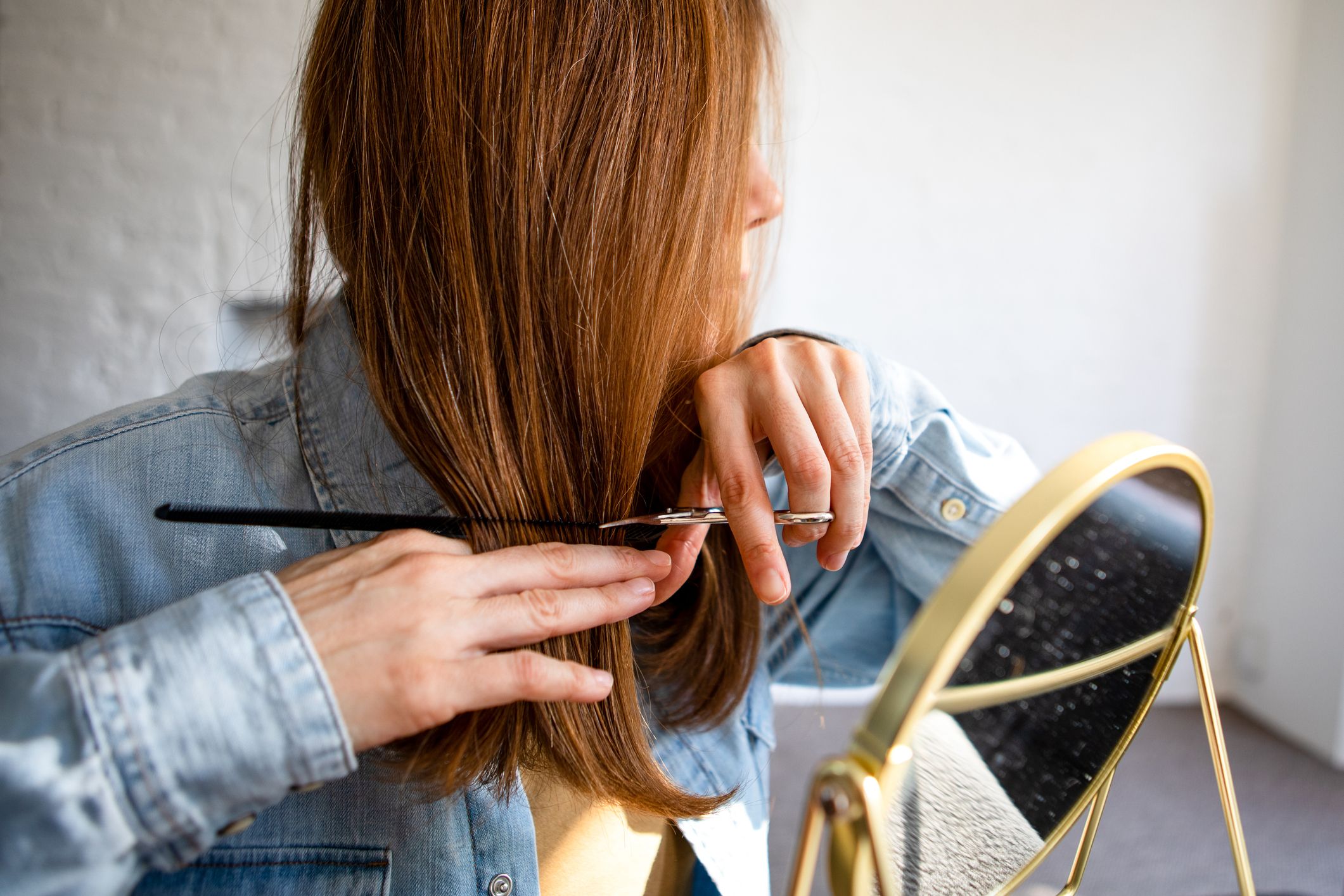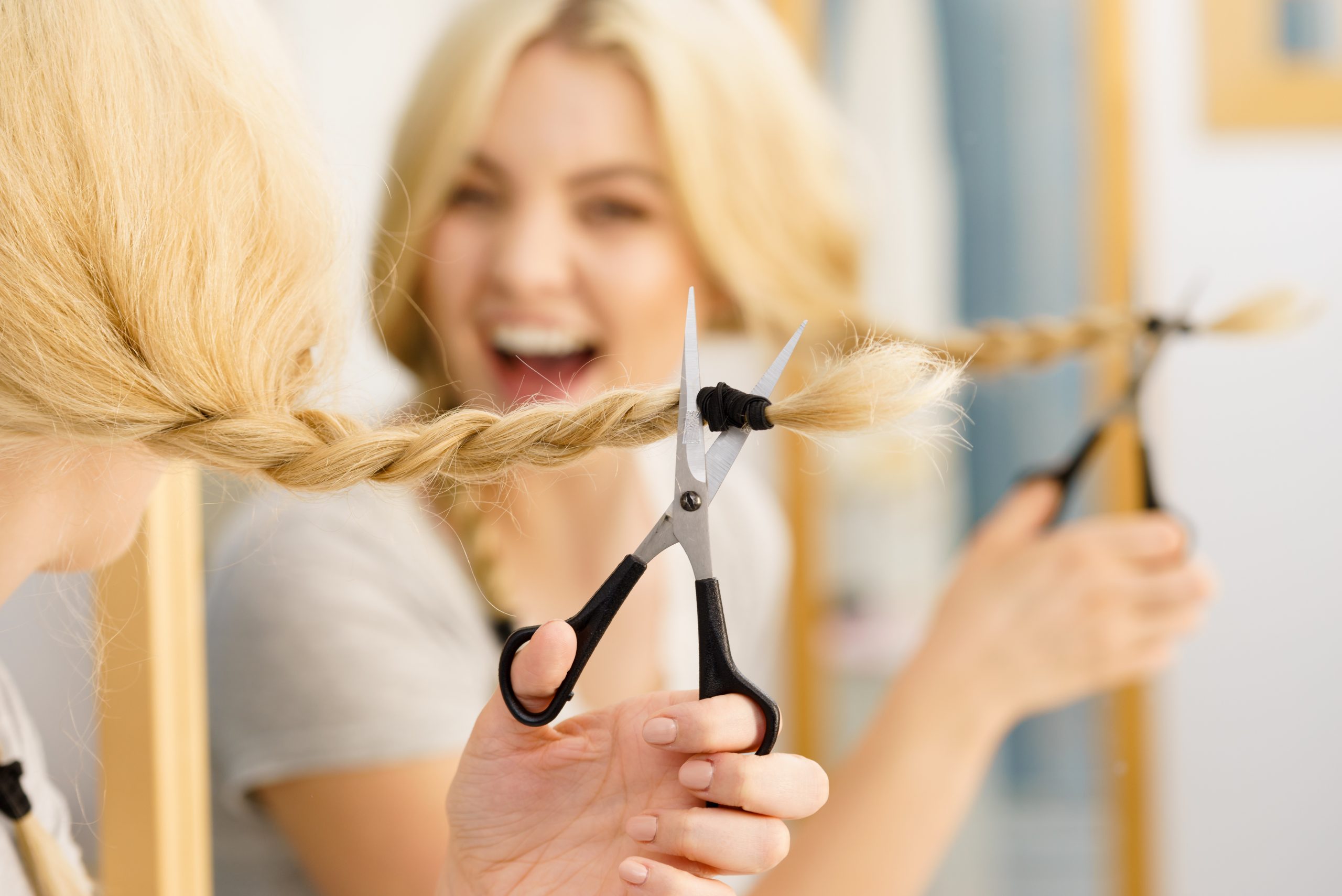3 Ways to Cut Hair in Layers
Table of Content
Throughout the haircut, you will use 1 stationary guide to measure against every segment of hair. This will produce shaggy layers at varying lengths throughout your hair. Section off a small segment of hair at the top of the head. Determine the length of the stationary guide—keep in mind that this will be your shortest layer.
After trimming the front section of your hair, remove the clips on your left side, lift the hair section and snip those ends with an angular shape. Then, bring those two sections down to check if both layers are aligned. As you can see, with a few tips and tricks, cutting your own hair may be quite easy if you do not plan extra big changes in your appearance. Trimming split ends or creating layers if often successful, not every short self-haircut done at home will look fabulous, though.
How to trim long layers
Continue doing this with other sections of hair, taking off only the very ends, or roughly 0.5 centimetres (0.20 in). Pull out 1 in (2.5 cm) sections of hair and cut them at an angle. Unclip the top section of hair and pull out smaller sections, holding them between your fingers as you cut the hair while pulling the section outwards. Continue doing this until you’ve cut the entire left section of hair.

Then, I blended my newly trimmed ends into my new face framing layers but using point cutting to soften the point between those two lengths. Grasp the stationary guide between the middle and forefinger of your non-dominant hand . Slide the fingers towards the ends while pulling the segment straight up at a 180° angle. Stop your fingers when they have reached the desired length. Gather a small segment of hair at the top of the forehead. Pull the segment of hair straight at a 90° angle.
Prep Your Hair
Brush the hair forwards towards the forehead. Gather the hair into a ponytail at the base of the forehead. If you are cutting a client's hair, have them sit in a chair. Rinsing your hair with shampoo helps get rid of your hair and scalp’s greasiness. It’ll also make it easier for you to hold your hair securely while trimming the sections. Don’t forget to dry your hair with a towel before jumping into the action.

A traveling guide moves with the area being cut.The most recently cut segment of hair in a section assumes the role of the traveling guide. It is held up to the next segment of hair and used as a ruler. Work in a well-lit place with access to a sink and a mirror - probably the bathroom. Have a towel ready to drape over your shoulders, a set of hair clips for holding back sections of your hair, your scissors, and a comb at your disposal. A second mirror you can use to check out the back of your hair is also necessary. You may also need a spray bottle filled with water to keep your hair damp, depending on how fast it dries.
The Path Towards a Layered Haircut: How Can You Layer Cut Your Hair at Home?
Fill in your email address to receive the free “5 Easy, Homemade Remedies to Beat Coughs & Colds” printable PDF. If you usually wear your hair parted to one side, then position the ponytail on that side, directly in front of where your part would be. First, thoroughly wash and condition, then comb it all starting from underneath, smoothing everything to the front.
While a salon appointment with a trained hairstylist is the safest way to go for any kind of haircut, sometimes you gotta do it yourself—and that’s okay. Just make sure you have sharp hair shears, a thorough tutorial featuring your own hair type, and expert advice (like…everything above), and when in doubt, cut less, not more. Before you start trimming your hair at home, find a tutorial that most closely matches your own hair length and hair type, so you can get the most accurate guide.
What to do before you cut your own hair:
When you flip your head back over, you'll see that this maintains the length but adds a few flattering layers. Pay careful attention to which sections of hair have been cut and which still need to be cut. When you're working with short hair, cutting the same section twice can make a big difference. Plan to cut your hair in a well-lit bathroom with at least two mirrors, so you can check your progress often and see the back of your head as well. This method creates a few face-framing layers in the front with longer layers in the back. If you'd like to adjust the length of your layers, use the scissors to carefully cut individual locks of hair.
Your fingers should be perpendicular to your forehead. It's better to layer short hair when it's evenly damp, so that you can cut the hair with greater precision. Keep in mind that this method will only work for pixie style cuts. Take a look at your hair and decide exactly where you want the layers to be and how short you want them before you begin.
This will soften the blunt appearance you made when you initially chopped it into a straight line. Pull your hair into a ponytail on top of your head. Fill in your email address to receive the free “100 Wholehearted Books to Take Back the Culture” printable guide. Fill in your email address to receive the free “31 Days of Praying Scripture for Newlyweds” printable guide. Fill in your email address to receive the free “Treasured Old Books” printable guide. Fill in your email address to receive the free “5 Easy + Healthy Lifestyle Drinks” printable PDF.
And to make sure you’re getting expert information, Brown says to choose one created by an actual hair expert or stylist. So if you want to skip these steps (since they’re going to be different for every hair type), keep scrolling for the best tutorials on trimming your own hair. But if you want expert advice (and you do!), keep reading first. This YouTuber shares her trimming technique for her gorgeous natural locks. For her, it's all about detangling and using your fingers for a more precise cut, and using already-cut hair as a guide to keep everything nice and even. Before cutting someone's hair, you can buy a hair demonstration model at a local beauty supply store.
It's important to regularly cut off dead or damaged hair to keep your overall hair looking and growing healthy. Trim it more often if you're treating your hair with chemicals or if you regularly expose your hair to heat. Once you've separated out each section, secure the hair with a clip to keep it in place. Sky Kim is a hairstylist with over a decade of experience. She currently works at Serge Normant at John Frieda in New York City. With his or her back to you, have him or her look down to the bellybutton and cut the center section straight across.

Layers can freshen up a hairstyle and give the illusion of volume. The layered look is flattering for any face shape, and it works equally well with straight or curly hair. Read on to learn how to prepare your hair for layering, cut it, and give your look the final touches it needs to look professional and chic. Dry and style your hair once the cut is finished, if desired. You can either let your hair dry naturally, or you can choose to use a hair dryer and brush to dry and style your freshly cut hair. If you're using a hair dryer, dry the bottom layer of your hair first, ending with the top layer for a fuller look.
Different Types of Layered Cuts: What’s The Most Suitable Style for You?
Bring hair to the front and snip at an angle or straight, depending on if you prefer a rounded or blunt shape to your cut. Shampoo and condition the hair prior to cutting your locks. Grab a towel and squeeze the excess water from the tresses. Comb through your hair to remove all the snags and snarls. When you are deciding the length of the 3 layers, remember that the shorter the hair, the smaller the difference in the layers should be. The 3 layers may differ in 2 to 4 inches on long hair and 1/2 an inch to 1 inch on shorter hair.

Comments
Post a Comment